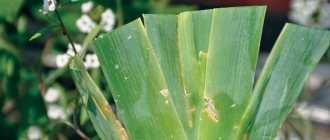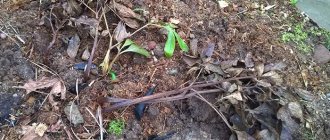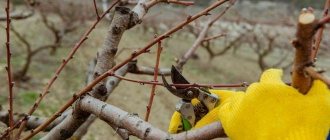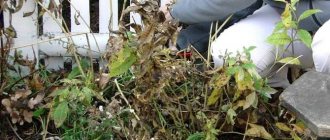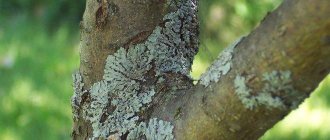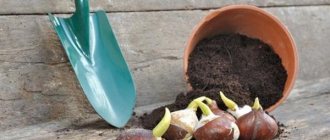Astilbe is an amazing plant that is gaining more and more space due to its beauty in gardens and flower beds of gardeners. One of the undeniable advantages is the abundance of varieties. The shrub does not require continuous active care. But still, this does not mean that astilbe does not require care in the fall, preparation for winter, pruning or additional shelter. Beginning gardeners are concerned about the question of whether it is necessary to make a full cut or cover the plant, and whether it is frost-resistant. All this must be known before planting the bush. With this information, you can avoid problems in the future and organize proper timely care.
What's special about caring for astilbe in the fall?
Astilbe is a plant that lives for a couple of decades. It is hardy and survives cold well. Therefore, there is often a desire to do nothing at all. But in the first year the shrub needs special care. To make it stronger, the flower stalks are immediately cut off. Then all the beneficial substances will not go to flowering, but will go to the development of roots. The soil must be loosened to ensure regular air exchange and watered. All weeds are removed near young plants, but the overgrown astilbe itself then pushes them out.
Shrubs that are 5-6 years old also require care. By this time, the roots are already actively growing, and their sensitivity to cold increases. Therefore, the soil around the bush is not only mulched, but also covered with non-woven material.
Attention! Overgrown bushes are replanted in the fall by division. For shrubs older than 5 years, this is especially important.
The entire process of caring for astilbe in the fall and preparing the flower for wintering consists of three stages:
- Feeding.
- Trimming flower stalks and dry stems.
- Cover the soil with mulch and cloth.
Features of wintering astilbe in open ground
The plant is highly frost-resistant. Because of this, many gardeners make the serious mistake of not taking any action. In fact, you need comprehensive care for astilbe in the fall in preparation for winter.
The main reason this procedure is required is that the plant is not intended to be grown in flower beds and gardens. Astilbe is a perennial found in mountainous regions at altitudes of up to 5 thousand meters. The bush is resistant to such conditions, but may suffer due to factors to which it was not previously adapted.
Important! Special care is required in the first year after planting in open ground. During this period, the astilbe has not yet matured and may be damaged due to frost or strong wind.
Preparation for winter involves a set of activities. It is necessary to consider the main stages of this procedure.
Pruning astilbe in autumn
Different varieties of shrubs bloom at different times, from approximately early summer to autumn. You can cut off faded buds not immediately, but a little later, because dried flowers also look beautiful, creating the illusion of long-lasting flowering.
For pruning, gardeners use ordinary garden pruning shears, which are first disinfected in a solution of potassium permanganate. It happens that one bush is infected with a disease, and in order to prevent the transfer of bacteria to the rest, the tool is disinfected after each pruning procedure.
Why prune astilbe in the fall?
Trim astilbe before planting seeds. The flower spends too much energy on this, which could be used to strengthen the roots and accumulate nutrients. Some gardeners prune fading flowers immediately, while others leave them longer. But after the first frosts, peduncles and stems are cut off to almost their entire length, because this makes it easier to protect the bush from frost.
Beginning gardeners have a question: when is it better to remove stems and leaves: in spring or autumn. Typically, flower stalks and stems are removed in the fall. But, if astilbe does not need to be covered for the winter, then you can cut the stems in the spring.
When to prune astilbe
The pruning date varies depending on the area in which the flower grows and the variety. The stems begin to be removed after the onset of frost, and different parts of the country get colder in different months. On average, astilbe stems are cut from early October to mid-November.
Advice!
If dried flowers are not removed immediately, cut them off along with the stems after frost. By this time, seeds have already formed.
How to prune astilbe correctly in the fall
Inexperienced gardeners are afraid to cut the stems too deeply and leave stumps 20 cm high. Such long cuttings are difficult to cover for the winter, and it does not look very neat. Therefore, they are removed strictly at the root, but so as not to affect the buds that form just above the soil in the root part. After this, the bush is hilled up and sprinkled with a layer of mulch. It is advisable to prune annually, at approximately the same time.
How to cover astilbe for the winter
Sheltering astilbe for the winter is mandatory in regions with an unfavorable climate, as well as in the case of mature and old bushes. In the south and in the middle zone, in the Black Earth Region, this is not necessary.
In the first years, it is enough to just hill up the bushes and lay a layer of mulch. When astilbe turns 4-5 years old, they begin to cover it, and this is done annually. It is not practical to erect a special wooden frame or other structures. After pruning, the astilbe bush becomes very low.
Therefore, you can hide it like this:
- Build a fence by laying bricks or digging wooden blocks around the perimeter.
- Pour leaves, peat, pine needles or other mulch inside.
- Stretch the covering material and secure it with bricks or stones along the edges, or dig in wooden dies, first inserting fiber between them and the soil.
To cover plants for the winter, classic materials are used:
- burlap;
- agrofibre;
- spunbond;
- lutrasil and others.
It is permissible to stretch the film, although this material practically does not allow air to pass through. Therefore, in the spring it needs to be removed as early as possible, for example, in early March.
Covering material can be fixed with stones
Care after pruning
Trimming the astilbe is not enough; the bush needs to be provided with comfortable conditions even after that. Then in the future it will bloom profusely and look attractive in the garden. Astilbe's homeland is mountainous, and this explains the fact that the plant tolerates winter cold well. But there are also snowless winters when the bush requires mandatory protection.
The root system of mature plants is insulated and fed in the pre-winter period. Additionally, gardeners mulch the soil to ensure lush flowering next season.
Mulching
Covering the soil around the bush with mulch helps protect the root system and young buds from freezing. Cover the soil and the trimmed bush with a layer of mulch of 15-20 cm. For mulching use
- peat;
- rotted manure;
- dry sawdust;
- humus.
Flower growers use fine tree bark as a covering layer. This material also helps protect roots and buds from low temperatures.
Fertilizer
In the pre-winter time, the flower must be fertilized. Thanks to this, astilbe tolerates cold well and blooms beautifully and luxuriantly next spring. Phosphorus-potassium fertilizers are suitable for this. About 20 g of the substance is added to one bush.
In addition, humus is added to the soil. The plant prefers soil rich in nutrients, so before frost, gardeners enrich it with organic mixtures.
Attention!
If you use manure as mulch, you don’t have to worry about the vigorous growth of the plant. Organic fertilizer takes a long time to decompose, so by spring the flower will use it as another source of energy.
Recommendations and common mistakes
It is important for novice summer residents to understand what exactly to do with astilbe in the garden in the fall, and in what time frame. In practice, gardeners sometimes make the same mistakes:
- It is believed that the plant is preparing for a dormant period, therefore, during autumn preparation and care, the application of fertilizers will be unnecessary or even harmful. There is only a grain of truth in this - the addition of any nitrogen-containing substances is categorically excluded. But plants especially need phosphorus and potassium (and not only astilbe). It is these microelements that help you survive the frosts safely.
- They are in a hurry with mulching and covering: it is better to wait for the first frost. If you throw leaves, straw, spruce branches and other materials on the eve of or during Indian summer, the roots may rot. A subsequent sharp change in temperature (during a cold snap) will also have a bad effect.
- Frequent watering. During autumn preparation and care, it is enough to give water only once. The rest of the time the plant gets enough precipitation. Water consumption in the autumn period decreases noticeably.
- Missing or incorrect trimming. During preparation, autumn care necessarily includes a haircut. It is wrong to believe that autumn pruning will be replaced by spring pruning. There is no need to be afraid to remove all branches at the root. Astilbe will recover quickly. The culture will have time to please with flowers next year.
- Some gardeners believe that there is no need to cover astilbe at all. In fact, this procedure is important in all regions except the southern ones.
Read more Astilbe flowers: planting and care, photos, growing in the country
Proper autumn care will allow you to get a healthy plant with lush flowers next year
Sheltering astilbe in winter
In the southern regions of the country, growing these bushes is less difficult. There is no need to cover astilbe for the winter, because even the overgrown roots are warm. Winters in the south are warm, and the plant feels comfortable in such conditions. But in areas where winters are harsh, cold or snowless, shrubs need protection from frost. Therefore, astilbe must be covered there.
Is it necessary to cover astilbe in winter?
Astilbe is classified as a plant that tolerates low temperatures down to -25°C. The above-ground parts of the bush will survive the cold winter, but the roots will most likely suffer. The roots of plants that are more than 5 years old are especially sensitive. They grow close to the soil surface and freeze if not covered. Along with the roots, the buds may suffer from the cold. Which will lead to rare and slow blooming of buds. Therefore, covering astilbe is no less important than trimming its stems.
Covering the bush correctly
Young, newly planted plants cause less trouble. Gardeners hill up pruned shrubs and cover the soil around the roots with a thin layer of mulch. Mature plants need to be covered more thoroughly. Especially if winters are cold and there is very little snow, or if another frost occurs after the spring thaw. In these cases, gardeners form a fence from boards, sticks, stones or bricks. A layer of textile material is placed on top, and its edges are pressed with stones so that the wind does not blow them away.
How to prepare astilbe for winter
Not all varieties of astilbe are winter-hardy. Some of them can withstand frosts down to -35 °C, others can die even at -25 °C. Since the weather in many Russian regions is unpredictable, astilbe flowers in the country should definitely be prepared for winter.
Basic preparation comes down to several steps:
- Watering and fertilizing.
- Trimming.
- Mulching.
- Covering with burlap, lutrasil, agrofibre and other materials.
It is not always necessary to cover a plant for the winter - it depends on the climatic conditions of the region and age:
- If it is a young bush (up to 4-5 years), it is enough to do a total pruning (under the stump) and put a layer of mulch - fallen leaves, hay, straw.
- If the bush is mature (more than 5 years), you will need to do not only mulching and pruning, but also shelter. To do this, use spunbond, burlap or other covering material.
Since the climate of the regions of Russia is very different, the rules for covering astilbe for the winter will also be different. It is believed that in the Urals and Siberia, covering the plant is mandatory - be it a young or mature bush. At the same time, there is no need to lay agrofibre in the middle zone. The exception is an abnormally cold winter, which is extremely rare.
Advice! When choosing ways to protect astilbe in winter, it is necessary to take into account the degree of winter hardiness.
For example, if a bush can withstand temperatures down to -20 °C, it is better to cover it even when grown in the middle zone and in the North-West of the country.
Proper preparation of astilbe for winter will ensure its rapid growth and lush flowering next year
Pre-winter preparation of astilbe in different climatic conditions
Since the regions of Russia differ in climatic conditions, astilbe requires different preparations for winter depending on the habitat. In some areas, it is enough to cover the bush with a layer of mulch, but in others this will not save the plant from freezing. Therefore, novice gardeners need to take into account all the details of preparing the bush for the cold of their region in order to avoid mistakes.
- Middle lane. If a not too frosty, but snowy winter is expected in the Moscow region, the soil around the bush is only mulched. Sometimes the plant is covered with pine spruce branches, straw or other material or fabric that provides access to fresh air. Thanks to this, the soil under the shelter layer does not dry out.
- Volga region. In the Volga region, winter time is quite warm, so you can limit yourself to the same actions as for the middle zone.
- Ural and Siberia. These regions have very harsh winters, so a layer of mulch will not be enough. The Ural and Siberian soil sometimes freezes up to a meter deep. Therefore, a frame is built around the pruned bush, on which material that allows air to pass through is hung.
Typical mistakes when preparing for winter
The main, most common mistakes made by gardeners when preparing astilbe for winter are the following:
- Incomplete pruning - many gardeners do not cut off faded inflorescences, as a result of which the plant is greatly weakened, giving up a very large amount of nutrients to the formation of seeds.
- Neglect of phosphorus-potassium fertilizing - in the absence of such measures as applying phosphorus and potassium fertilizers to the crop, astilbe goes into the winter not strong enough. This, in the case of extreme cold and insufficient insulation, can play a fatal role.
- Poor mulching - a small layer of mulch can lead to the fact that in the event of even slight frosts, the soil around the plant will freeze more intensely, causing damage or complete death of the rhizome.
Also, in areas with harsh winters and when the plant is more than 5 years old, the most serious mistake is poor insulation of the bush, leading to its damage or complete death.
Replanting astilbe in autumn
The astilbe bush needs constant moisture, so experienced gardeners recommend replanting the plant after flowering. At the beginning of September or at the end of August, the sun is no longer so active, but there is enough moisture.
The shrub is replanted to achieve denser flowering. Mature astilbe does not look so attractive, and the roots growing upward are exposed to severe cold. With the help of a transplant, she is revived. This needs to be done once every 4 years.
When dividing a bush, be sure to use a sharp knife so as not to harm the plant. The entire root system is usually cut into several parts so that each new bush contains 3 intact buds. The roots are placed in a container of water so that the plants begin to develop independently and produce fresh growth.
You may be interested in:
Preparing peonies for winter: pruning time Peonies are one of those species that do not need to be looked after particularly carefully during flowering. In the summer with…Read more…
When planting, experienced flower growers leave a distance of half a meter between the bushes. The astilbe needs to grow, and it needs space for foliage and branches. The depth to plant is determined by the buds. They should be approximately 4-5 cm above the soil level. After this, add a thin layer of mulch about 2 cm. This will help retain moisture and prevent the appearance of weeds.
Advice!
Experienced gardeners believe that it does not matter when exactly to replant. Sometimes they do this even during the growing season. The only thing that prevents effective and successful replanting is the lack of sunlight and moisture.
Is it necessary to cut astilbe for the winter?
Since astilbe winters in open ground, pruning of the plant is mandatory - both adult and young bushes. The haircut is carried out completely using scissors or other garden tools. The main condition is to correctly plan the pruning period, which depends on the climatic characteristics of the region.
Terms and rules of pruning
To protect astilbe in winter, radical (total) pruning is carried out every autumn. It is carried out in two stages:
- First, the flower stalks are removed when flowering has stopped (in the second half of summer).
- Then all shoots are removed.
Optimal pruning time:
- middle zone - mid-October;
- Siberia and the Urals - end of September;
- southern regions - the last ten days of October or the beginning of November.
On the one hand, the first frosts on the soil (a drop to 5 degrees Celsius and below) should not yet occur. It is advisable that according to the forecast they are expected in 7-10 days. On the other hand, you need to wait for the astilbe leaves to dry. Green foliage decorates the garden well. In addition, if you cut off leaves that have not yet withered, the bush can receive serious injuries and will take a long time to recover in the spring.
Rules for pruning to prepare astilbe for winter:
- To do this, take pruning shears or garden shears.
- Thoroughly disinfect the blades in any alcohol-containing product, hydrogen peroxide or other solutions.
- The shoots are completely cut off at the root, leaving 4-5 cm in height.
- Damaged areas are sprinkled with charcoal or moistened with a weak solution of hydrogen peroxide.
An ordinary garden pruner is suitable for pruning astilbe.
Mulching
Mulching is a standard technique that helps maintain soil moisture in summer and protect plants in winter. It is necessary to carry out the procedure after pruning, since new growth buds are constantly formed on the upper parts of the rhizome, which will produce shoots the next season. To do this, astilbe should be completely sprinkled:
- peat or compost (they must decompose completely);
- pine needles, spruce branches;
- crushed, dried bark;
- well dried hay or straw.
The mulch layer must be made large enough to completely cover the rhizome. Do not build a hill that is too high, since the fallen snow will also serve as insulation. In early spring, this layer is removed so that the shoots do not rot from excess evaporated moisture.
Important! Young bushes of the first year of life and adult astilbes over five years old must be hilled.
To do this, loosen the ground and create a mound around the plant. If this is not done, the rhizomes of the flower may suffer from severe frost.
Common mistakes in autumn care for astilbe
Astilbe is a frost-resistant plant; relying on this, inexperienced flower growers make mistakes when preparing the bush for wintering and during autumn care. If not properly cared for, the shrub blooms less and less, and then dies altogether. You need to know what errors are most common:
- Lack of fertilizers in autumn.
- Incorrect pruning of astilbe in the fall (or its complete absence).
- Lack of mulch layer or additional cover for shrubs.
What to do with astilbe in the fall: rules for care and preparation for winter
If you carry out a number of gardening tasks to care for the shrub in the open ground, then next year you will be able to see a strong plant with beautiful flowering. So what to do with astilbe at this time? Let's figure it out.
Autumn fertilizing of astilbe: how and with what to fertilize
This procedure for caring for shrubs in autumn helps it recover after flowering and prepare for winter. In autumn, astilbe needs two elements: potassium and phosphorus.
Note! In autumn, garden plants should not be fed with nitrogen-containing fertilizers.
As potassium-phosphorus fertilizers, you can use ready-made complex preparations marked “Autumn fertilizer”, “For autumn”, “Autumn”. Or you can mix mineral fertilizers, for example, superphosphate and potassium sulfate. It is necessary to feed astilbe with purchased fertilizers according to the instructions for the preparation.
There are 2 ways to apply fertilizers: dry and liquid. Fertilizers are absorbed more efficiently and quickly when applying a liquid solution. If you want to fertilize the bush with dry mineral fertilizers, then they need to be spread evenly in the soil near the trunk and lightly incorporated into the soil, and then watered abundantly with water.
Important! When applying any fertilizer, you must first water the bush with ordinary clean water.
Scheme for pruning astilbe in autumn
Autumn pruning can be called a key procedure for caring for astilbe. Choosing the timing of gardening work is quite simple - you need to be guided by the weather: you can prune the bush after the first autumn frosts hit and the above-ground part begins to turn black. In different regions, pruning time occurs at slightly different periods, for example, in the middle zone (Moscow region) - approximately at the end of October, in Siberia, the Urals, in the Leningrad region - approximately in the first half of October, in the South - pruning is optimal at the end of November.
Advice! Before performing this procedure, make sure you have the correct tool. A regular garden pruner is suitable for these purposes. Of course, it must be sharp and clean (disinfected).
The scheme for pruning astilbe in autumn is very simple: it is necessary to trim the above-ground part with shrubs so that it is level with the ground.
Immediately after pruning, it is necessary to eliminate plant debris to avoid possible infection and pest infestation of other perennials, shrubs and trees. The best way is to burn the leftovers.
Watering, loosening, weeding
If the first half of autumn turned out to be dry, warm and arid, then it is necessary to periodically water the bush with a small amount of water. But at the same time, it is necessary to gradually reduce the amount of moisture introduced, completely stopping when it gets colder.
Also, after watering, a few hours later it is necessary to loosen the soil in the tree trunk circle to improve air exchange. And even if the autumn turned out to be wet and you do not water, you need to occasionally loosen the soil.
It is also important to remove weeds in a timely manner. It is convenient to combine loosening with weeding.
Pruning phlox
To carry out the procedure, choose the end of September - beginning of October, after the completion of the flowering phase. The work must be completed before the cold weather sets in.
Pruning is carried out using two methods: exactly to the ground or leaving 5 - 10 cm above the soil layer.
Need to know.
It is not recommended to break off phloxes with your hands - this leads to damage to the vegetative buds of renewal. You can scatter wood ash next to the plants; it will protect the flowers from pests and will serve as an excellent feed for phlox.
Source
What do you feed astilbe? How to feed astilbe in the spring, what fertilizers to apply when planting
Astilbe is a perennial, cold-resistant plant with small flowers collected in panicle-shaped inflorescences. This crop needs feeding with a variety of fertilizers for productive growth and development of stems, root systems and the entire plant.
Types and methods of propagation of astilbe
There are several ways to obtain new plants.
- Dividing a bush is an easy and practical method, carried out in early spring. The bush should be divided so that each part has a pair of buds, and the rhizome is at least 5 cm in length. Old roots should be removed. Separated astilbe bushes of any size take root equally well in the ground.
- Spring propagation by buds. One of the buds with rhizome is cut off from the main shoot and planted in a greenhouse, where it is protected from frost. The soil must be constantly moistened and contain enough peat and sand. Astilbe can be planted in open areas of the garden only after a year.
- In addition to bush propagation, it is possible to grow astilbe from ripened seeds. In the fall, the seed is removed and harvested, in the spring it is planted in a wide box filled with peat and sand (3:1 ratio), and watered abundantly. Then the entire container is wrapped in film or a bag and put in the refrigerator for 3 weeks. When seedlings appear, move the container to a warm, well-lit place. You need to water the plants carefully, right to the roots, without touching the leaves. Astilbe will begin to bloom 3 years after planting the seeds.
Pre-winter care for daylilies
Such crops are not dug up before the onset of winter, and their decorative qualities remain at their best even after many years of flowering in the same flower bed, and therefore not all gardeners consider it necessary to properly care for their plants.
After flowering ends, the following work is carried out:
· dry and diseased shoots - cut off;
· cut off the leaves after they wither;
· remove weeds.
On a note.
Until the growing season ends, daylilies need to be watered so that the plants accumulate the required amount of moisture before wintering.
In November, the plantings are mulched. If severe frosts are predicted, then spandbond, spruce spruce branches or lutrasil are used to cover the flowers.
Why fertilize plants
First of all, fertilizing astilbe is aimed at preserving its unique beauty by maintaining abundant flowering.
In addition, well-chosen fertilizers will fill the soil with all the necessary nutrients, which, when entering the plant, will ensure its growth and development, and improve both aesthetic and functional characteristics.
General rules for fertilizing astilbe look like this:
- The use of fertilizers begins in the second year after planting.
- It is better to feed astilbe for the first time in April.
- The second time fertilizing astilbe occurs at the moment the inflorescences ripen - as a rule, this is June.
- The third time - at the end of flowering - in the fall.
How to feed petunia for abundant flowering
Important! Do not forget that a flower that receives all the necessary substances from the earth has better immunity. Accordingly, proper feeding is also disease prevention.
How to feed astilbe in the fall. The autumn story of the inimitable astilbe
In autumn it is especially sad to part with blooming astilbe.
Its bloom is a memory of the luxury of warm summer days and a wonderful pastime. Everything about this plant attracts attention – flowers, leaves. It is hardy and resilient, and is distinguished by the fact that it winters well in most regions. But despite this, the plant should be prepared for the cold season. The most careful preparation will be required for astilbe plants in the year of planting, as well as for adult bushes that have lived for four years or more.
mwms1916 / Flickr.com
Trimming.
The preparation of young bushes should begin in the summer, when the peduncle is removed upon emergence. This technique allows the plants to devote all their strength to successful rooting and the formation of rhizome buds.
As soon as the early flowering astilbe finishes flowering, the inflorescences are cut off, which eliminates the setting of seed pods that are not necessary. All the plant’s energy will be used for further development and preparation for winter.
At the first onset of autumn cold weather, late-flowering varieties of astilbe complete their flowering, but this does not at all spoil the decorative appearance of the bushes. Quite the contrary, astilbe looks elegant and attractive.
However, on the eve of winter, the above-ground part of the plant (no matter how good it looks) should be removed, both from young and mature bushes. Shoots are cut at soil level.
anneheathen/Flickr.com
Feeding.
But first, in order to help the flowers survive the cold part of the year, they should be supported with potassium-phosphorus fertilizers. This will strengthen the bushes and is guaranteed to allow astilbe to bloom with renewed vigor in the spring.
A tablespoon of dry fertilizer is scattered under each bush. After which the plant is well watered. It’s even better to feed with liquid compounds or replace chemical fertilizer with natural fertilizer – wood ash.
Hilling.
Young bushes need to be lightly hilled for the winter. This is done in order to cover the emerging buds and prevent them from freezing in winter. A plant touched by frost will emerge from winter weakened. This will affect the duration and splendor of flowering, as well as the decorativeness of the foliage. Hilling is also recommended for old bushes with four or more years of experience.
mwms1916 / Flickr.com
Mulching.
Subsequently, the hilled bushes of young astilbe are mulched with a layer of peat chips, humus or compost.
Older plantings should also be loosened and mulched. This is enough for healthy bushes growing in the temperate zone. There is no need to hill up and cover; wintering will pass without complications.
Shredded tree bark, sawdust, small spruce paws, and rotted manure can be used.
dan.kristiansen / Flickr.com
Shelter.
Not all bushes require it. Only for adults over four years of age. Over the years, bushes become most vulnerable to unfavorable wintering periods. Vital activity decreases, and vertically growing rhizomes become exposed. Even mulching with hilling does not help. Only shelter will save the situation in a frosty and snowless winter.
Any modern covering materials are suitable - lutrasil, agrofibre (spunbond), as well as pine spruce branches.
If your region is characterized by severe frosts, then you can additionally build a hut from boards over the bush, insulating it inside with leaf litter.
Although astilbe is an unpretentious and persistent plant, no matter how you look at it, if you want to see the inimitable openwork flowering of the rainbow princess in the summer, you need to try and properly prepare the plant for winter.



